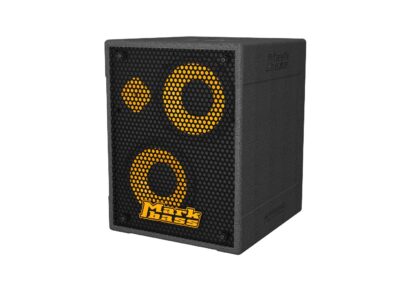SE Electronics 4400 Condenser Microphone | Sound and Music | RRP: $879.99
There are some microphones that will always reserve a special place in our hearts-cult classics who’s capsules, design aesthetics and sound characteristics have allowed them to permeate beyond their humble beginnings, evolving into something of a life hack for engineers looking to pull a particular sound again and again.
Read more gear reviews here.
For many self-recording guitarists out there (particularly those of the big amp, thick distortion variety), the SE Electronics 4400 is a microphone that more than falls into this category. A large diaphragm condenser with the perfect combination of lightning fast transient response and upper mid articulation, at a price point that made it a more than viable option for the every person. For those relatively new to recording, the 4400a quickly became the guitar recording condenser of choice, especially when your garden variety dynamic just isn’t cutting it, providing a whole host of Eureka moments and serving as the perfect antidote to a dark or muddy guitar tone.
Now, before I go any further, let me preface the rest of this review with this disclaimer. The SE 4400a is not JUST a guitar cabinet microphone. It has a number of applications, but if your guitarist hears that there’s one lying around, it’s likely that they’ll claim it as their own from there on out. So, let’s see what makes this iconic microphone iconic.
The SE Electronics 4400 is a utilitarian workhorse that offers a 1” gold sputtered capsule housed in a rugged steel frame. That’s the simple breakdown.
The 4400 has been designed to capture that classic vintage condenser microphone sound; that which often requires the use of a microphone many times its price to achieve. Every 4400a capsule and electronics set is hand tuned in the SE factory to ensure that it has that tone and charm that you would expect from a microphone of this nature. It offers a large frequency range with a fairly flat response above 50Hz depending on which mode it is operating in. Yet, it still offers its own subtle colouration to the signal that is singular to the characteristics of the capsule and electronics housed within. The unique shock mount that is included with the microphone is a further nod to this kind of broad functionality, allowing for easy access to all of the control switches.
It could be likened to another classic microphone with a similar rectangular shape, but the SE Electronics 4400 still has a very unique tone. Used as a stereo pair, it beautifully adds life to a piano with a richness in the top end that shimmers and a mid-range that allows the natural resonance of the timber to come to life. The same goes when it’s used as drum overheads. It sizzles with the cymbals, yet still booms on tom rolls.
All this said, I have never met any group of musicians more attracted to the sound of the 4400 than guitarists. This is a microphone that absolutely comes to life in front of a guitar cabinet. Its ability to handle high SPLs means you can run it right up in front of a single speaker combo, and the shock mount design becomes understood in this application as it doesn’t restrict placement close to the cloth. Or, pull it back about two feet from a qua box and let it capture the full sound of four speakers working in unison. What you get is one of the great all time guitar sounds in a microphone that has been built to handle it.
Let’s face it, along with drummers, guitarists are up there for treating gear pretty roughly. So, it makes sense that if you’re going to let them anywhere near a microphone, it needs to be tough. The all metal housing of the 4400 and spring steel wire mesh around the capsule have been designed to take abuse. The same goes for the shock mount. These are not precious museum pieces that need to be kept behind glass. This is a microphone that has been built to get used and abused and continues to deliver.
A series of switching options is included on the housing with a 10dB and 20dB attenuator switch for high level signals. There’s a high pass filter with two frequency options and most importantly, there is a polar pattern switch, giving you the choice between Cardioid, HyperCardioid, Omnidirectional and Figure of Eight patterns. This allows for the sE 4400 to be used in a wide array of applications and environments. I think it goes without saying that for the most part, the standard cardioid option is going to be the go-to choice, but when used as a pair the hyper cardioid will allow for greater difference in the stereo spread, as will combinations of patterns as a pair. So, it will be pleasing to many to know that whilst this microphone is available as a single unit with shock mount, you can also purchase a matched stereo pair that include a stereo mounting bar as well. Either way, if you’re buying one or two, you get the dedicated shock mounts and sturdy metal carry cases to ensure your 4400 travels safely to every event. The only question is, where will you first use yours?
For more information, head to SE Electronics. For local enquiries, visit Sound and Music.







